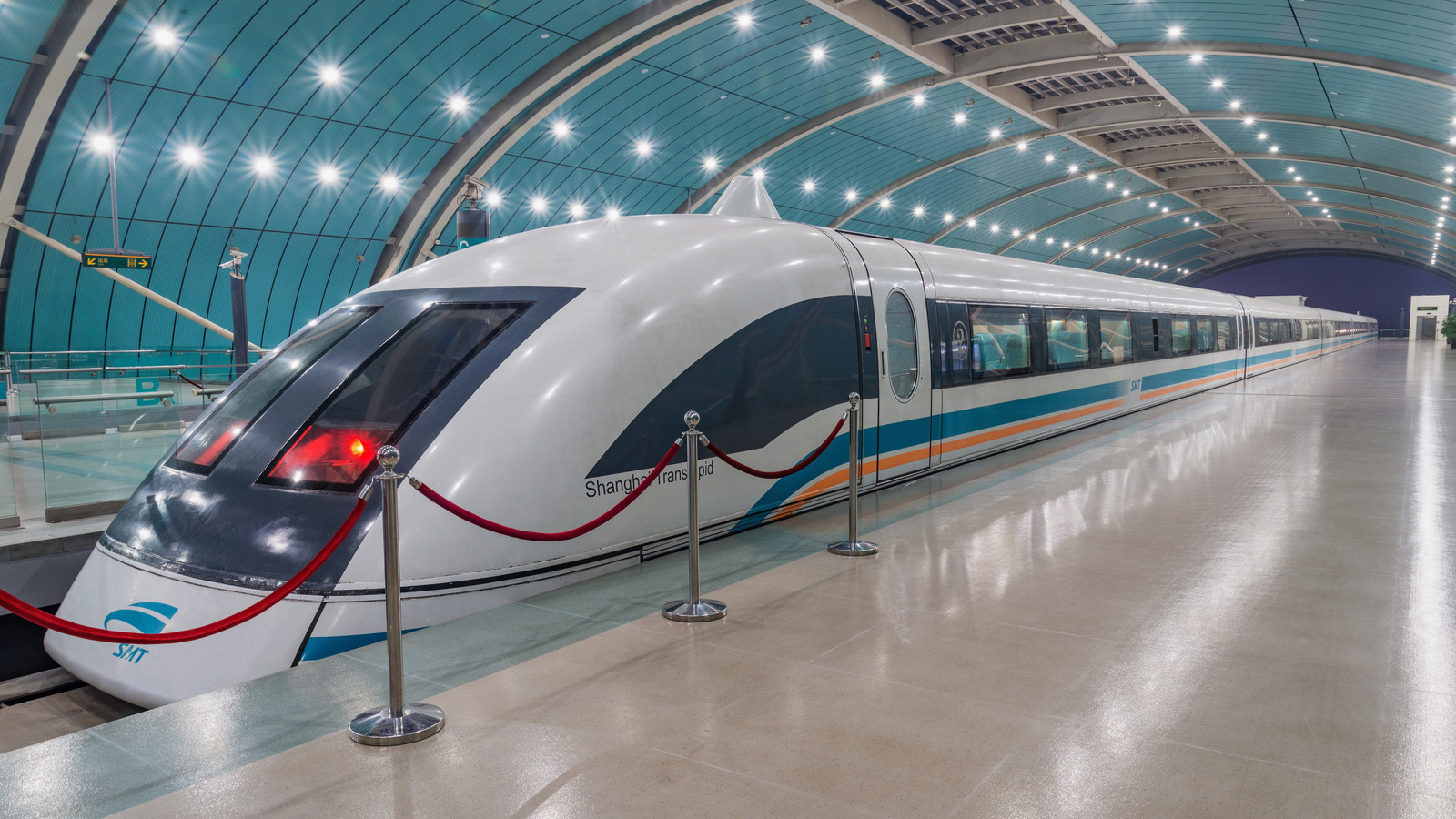 Locomotive74/Shutterstock
Locomotive74/Shutterstock
The science behind a bullet train's incredible speed has advanced to the point that they no longer need wheels to stay on the tracks. There are some magnetic trains that do use rubber wheels until they reach a certain speed, though. When it comes to magnetic bullet trains — or Maglevs (magnetic levitation) — they don't touch the tracks at all while they're moving. Using incredibly powerful magnets in the train and coils in the track, they levitate. This technology completely bypasses wheel friction, which is why these trains can travel so fast (Japan's SC Maglev can reach 375 mph).
Without wheels, a train propels along the track by alternating the direction of its magnetic coils to align with the polarity of those in the track, pulling the train to the next coil along the way. This entire system is objectively safer than conventional trains.
Derailments caused by hard cornering aren't possible with a Maglev system. According to the Department of Energy, "The further a Maglev train gets from its normal position between the guideway walls, the stronger the magnetic force pushing it back into place becomes." While Maglev trains are overall safer than traditional ones, there have been incidents that have led to deaths.
There are two types of Maglevs
 Tpg/Getty Images
Tpg/Getty Images
All Maglevs might look the same, but they don't all use magnetism in the same manner. There are Electromagnetic suspension (EMS) trains, which have a part of the train wrap around the track so there are magnets along the side, as well as underneath. This type of train uses attraction between the magnets to levitate about a third of an inch above the track. Germany's Maglev system from 2006 and China's new Maglev train were an EMS type.
Japan has favored electrodynamic suspension (EDS) trains — in fact, it was Japan that developed this version — which use magnets to repel the train from the rail and levitate nearly four inches above the track. EDS trains have one advantage over EMS ones in that they conduct a small amount of electricity, so if power to the whole system were lost, an EDS train would still have power for a short time.


